 W
WThe Socialist Republic of Serbia, previously known as the People's Republic of Serbia, was one of the six constituent republics of the Socialist Federal Republic of Yugoslavia. Its formation was initiated in 1941, and achieved in 1944-1946, when it was established as a federated republic within Yugoslavia. In that form, it lasted until the constitutional reform in 1990-1992, when it was reconstituted, as the Republic of Serbia within the Federal Republic of Yugoslavia. It was the largest federated state within Yugoslavia, in terms of population and territory. Its capital, Belgrade, was also the federal capital of Yugoslavia.
 W
WBačka Oblast was one of the oblasts of the Kingdom of Serbs, Croats and Slovenes from 1922 to 1929. Its administrative center was Novi Sad.
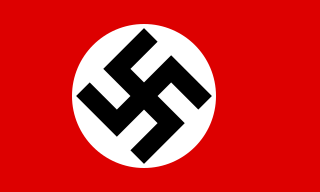 W
WThe Banat was a political entity established in 1941 after the occupation and partition of Yugoslavia by the Axis Powers in the historical Banat region. It was formally under the control of the German puppet Government of National Salvation in Belgrade, which theoretically had limited jurisdiction over all of the Territory of the Military Commander in Serbia, but all power within the Banat was in the hands of the local minority of ethnic Germans (Volksdeutsche). The regional civilian commissioner and head of the ethnic German minority was Josef Lapp. Following the ousting of Axis forces in 1944, this German-ruled region was dissolved and most of its territory was included into Vojvodina, one of the two autonomous provinces of Serbia within the new SFR Yugoslavia.
 W
WBanat, Bačka and Baranya was a de facto province of the Kingdom of Serbia and the Kingdom of Serbs, Croats and Slovenes between November 1918 and 1922. It included the geographical regions of Banat, Bačka, and Baranya and its administrative center was Novi Sad.
 W
WThe Banovina of Croatia or Banate of Croatia was an autonomous province (banovina) of the Kingdom of Yugoslavia between 1939 and 1941. It was formed by a merger of Sava and Littoral banovinas into a single autonomous entity, with small parts of the Drina, Zeta, and Danube banovinas also included. Its capital was Zagreb and it included most of present-day Croatia along with portions of Bosnia and Herzegovina and Serbia. It had a surface area of 65,456 km2 and a population of 4,024,601 in late 1939. Its sole Ban during this period was Ivan Šubašić.
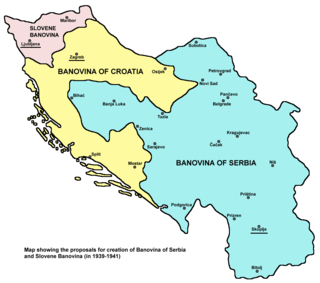 W
WThe Banovina of Serbia or Banate of Serbia, officially known as "the Serbian Lands", was a proposed administrative unit of the Kingdom of Yugoslavia. Its creation was proposed after the establishment of the Banovina of Croatia in 1939. However, due to the Axis occupation and partition of Yugoslavia in 1941, the proposal was never implemented.
 W
WBelgrade City Administration, was an administrative district of the Kingdom of Yugoslavia from 1929 to 1941. Its administrative center was Belgrade.
 W
WCentral Serbia, also referred to as Serbia proper, is the region of Serbia lying outside the provinces of Vojvodina to the north and the disputed territory of Kosovo to the south. Central Serbia is a term of convenience, not an administrative division of Serbia as such, and does not have any form of separate administration.
 W
WThe colonization of Kosovo was a programme begun by the kingdoms of Montenegro and Serbia in the early twentieth century and later implemented by their successor state Yugoslavia at certain periods of time from the interwar era (1918–1941) until 1999. Over the course of the twentieth century, Kosovo experienced four major colonisation campaigns that aimed at altering the ethnic population balance in the region, to decrease the Albanian population and substitute them with Montenegrins and Serbs. Albanians formed the ethnic majority in the region after it became part of Yugoslavia in early 20th century.
 W
WDanube Banovina or Danube Banate, was a banovina of the Kingdom of Yugoslavia between 1929 and 1941. This province consisted of the geographical regions of Syrmia, Bačka, Banat, Baranya, Šumadija, and Braničevo. The capital city of the Danube Banovina was Novi Sad. The province was named after the Danube River.
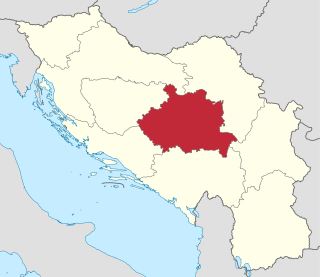 W
WThe Drina Banovina or Drina Banate, was a province (banovina) of the Kingdom of Yugoslavia between 1929 and 1941. Its capital was Sarajevo and it included portions of present-day Bosnia and Herzegovina and Serbia. It was named after the Drina River and, like all Yugoslav banovinas, was intentionally not based on ethnic boundaries. As a result of the creation of the Banovina of Croatia in 1939, its territory was reduced considerably.
 W
WThe Holocaust in German-occupied Serbia was part of the European-wide Holocaust, the Nazi genocide against Jews during World War II, which occurred in the Territory of the Military Commander in Serbia, the military administration of the Third Reich established after the April 1941 invasion of Yugoslavia. The crimes were primarily committed by the German occupation authorities who implemented Nazi racial policies, assisted by the collaborationist forces of the successive puppet governments established by the Germans in the occupied territory.
 W
WThe Kingdom of Yugoslavia was a state in Southeast and Central Europe that existed from 1918 until 1941. From 1918 to 1929, it was officially called the Kingdom of Serbs, Croats and Slovenes, but the term "Yugoslavia" was its colloquial name due to its origins. The official name of the state was changed to "Kingdom of Yugoslavia" by King Alexander I on 3 October 1929.
 W
WThe 1991 protests in Belgrade happened on the streets of Belgrade, the capital of Serbia and Yugoslavia when a protest rally turned into a riot featuring vicious clashes between the protesters and police.
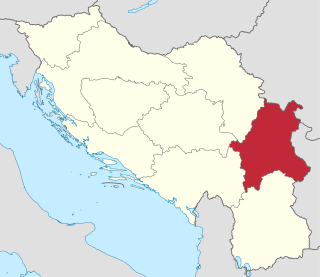 W
WThe Morava Banovina or Morava Banate, was a province (banovina) of the Kingdom of Yugoslavia between 1929 and 1941. This province consisted of parts of present-day Central Serbia and it was named after the Morava Rivers. The capital city of the Morava Banovina was Niš.
 W
WMilentije Popović was a member of Communist Party of Yugoslavia (KPJ) since 1939. During World War II he held various Party and administrative positions. After the war, he became the Minister of interior affairs, trade and supplies, and then Minister of foreign trade and finance in Yugoslav federal government.
 W
WThe Socialist Autonomous Province of Kosovo, comprising the Kosovo region, was one of the two autonomous provinces of Serbia within Yugoslavia, between 1945 and 1990, when it was renamed Autonomous Province of Kosovo and Metohija.
 W
WThe Socialist Autonomous Province of Vojvodina was one of two political entities formed in Yugoslavia after World War II and one of the two autonomous provinces of Serbia within the Yugoslavia, between 1945 and the breakup of Yugoslavia. Until 1963, the province was named Autonomous Province of Vojvodina, and had a lower level of autonomy.
 W
WSouth Serbia was a province (pokrajina) of the Kingdom of Serbs, Croats and Slovenes that existed between 1919 and 1922. It encompassed the modern territories of Sandžak, Kosovo and North Macedonia. The term "Old Serbia", was historically used in Serbian politics, literature and science for the territories of the province. The term continued in use for the Vardar Banovina and Zeta Banovina following its disestablishment.
 W
WSyrmia Oblast was one of the oblasts of the Kingdom of Serbs, Croats and Slovenes from 1922 to 1929. Its administrative center was Vukovar.
 W
WThe Territory of the Military Commander in Serbia was the area of the Kingdom of Yugoslavia that was placed under a military government of occupation by the Wehrmacht following the invasion, occupation and dismantling of Yugoslavia in April 1941. The territory included only central Serbia, with the addition of the northern part of Kosovo, and the Banat. This territory was the only area of partitioned Yugoslavia in which the German occupants established a military government. This was due to the key rail and riverine transport routes that passed through it, and its valuable resources, particularly non-ferrous metals. On 22 April 1941, the territory was placed under the supreme authority of the German military commander in Serbia, with the day-to-day administration of the territory under the control of the chief of the military administration staff. The lines of command and control in the occupied territory were never unified, and were made more complex by the appointment of direct representatives of senior Nazi figures such as Reichsführer-SS Heinrich Himmler, Reichsmarschall Hermann Göring, and Reichsminister Joachim von Ribbentrop. The Germans used Bulgarian troops to assist in the occupation, but they were at all times under German control. Sources variously describe the territory as a puppet state, a protectorate, a "special administrative province", or describe it as having a puppet government. The military commander in Serbia had very limited German garrison troops and police detachments to maintain order, but could request assistance from a corps of three divisions of poorly-equipped occupation troops.
 W
WThe Treaty of Trianon was prepared at the Paris Peace Conference and was signed in the Grand Trianon Palace in Versailles on 4 June 1920. It formally ended World War I between most of the Allies of World War I and the Kingdom of Hungary. French diplomats played the major role in designing the treaty, with a mind to establishing French-led coalition of the newly formed nations. It regulated the status of the independent Hungarian state and defined its borders generally within the ceasefire lines established in November–December 1918 and left Hungary as a landlocked state that included 93,073 square kilometres (35,936 sq mi), 28% of the 325,411 square kilometres (125,642 sq mi) that had constituted the pre-war Kingdom of Hungary. The new Kingdom had a population of 7.6 million, 36% compared to the pre-war kingdom's population of 20.9 million. Though the areas that were allocated to neighbouring countries had a majority of non-Hungarians, in them lived 3.3 million Hungarians – 31% – who were now in a minority status. The treaty limited Hungary's army to 35,000 officers and men, and the Austro-Hungarian Navy ceased to exist. These decisions and their consequences has been the cause of deep resentment in Hungary ever since.
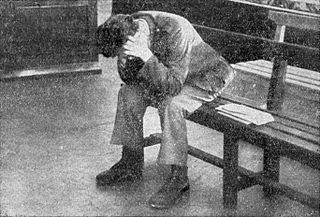 W
WThe Trial of Draža Mihailović et al., or the Belgrade Process, was the 1946 trial of Draža Mihailović and a number of other prominent convicted collaborators for high treason and war crimes committed during World War II.
 W
WThe Vardar Banovina, or Vardar Banate, was a province (banate) of the Kingdom of Yugoslavia between 1929 and 1941.
 W
WThe Zeta Banovina, was a province (banovina) of the Kingdom of Yugoslavia between 1929 and 1941. This province consisted of all of present-day Montenegro as well as adjacent parts of Central Serbia, Croatia, Kosovo and Bosnia and Herzegovina. It was named after the Zeta River which also gave its name to the medieval state of Zeta that roughly corresponds to modern-day Montenegro. The capital city of the Zeta Banovina was Cetinje.